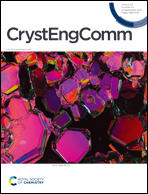Electronic and architecture engineering of hammer-shaped Ir–NiMoO4-ZIF for effective oxygen evolution†
Abstract
The popular design of an electronic structure and architecture with appropriate binding strength with oxygen-involved intermediates and abundant active sites is of paramount significance for boosting the oxygen evolution reaction (OER), yet it is still challenging. Herein, an innovative hammer-shaped structure has been well developed by in situ assembly of ZIF-67 nanocubes on the surface of one-dimensional (1D) NiMoO4 nanorods. After doping with an ultralow amount of Ir, the NiMoO4-ZIF hammers are demonstrated to be highly active toward the OER, delivering a current density of 10 mA cm−2 with an ultralow overpotential of 235 mV. On the basis of X-ray photoelectron spectroscopy and surface valence band spectra, it is revealed that the ultralow Ir doping can effectively modify the electronic structure of the metal center, leading to optimization of the binding strength with O* and OOH*. Moreover, the hammer-like architecture and intimate interface between NiMoO4 and in situ formed CoOOH also contribute to the substantial improvement in OER performance. This work manifests the significance of an electronic and architecture engineering strategy for an improvement in electrocatalytic performance and presents an advanced OER electrocatalyst.



 Please wait while we load your content...
Please wait while we load your content...